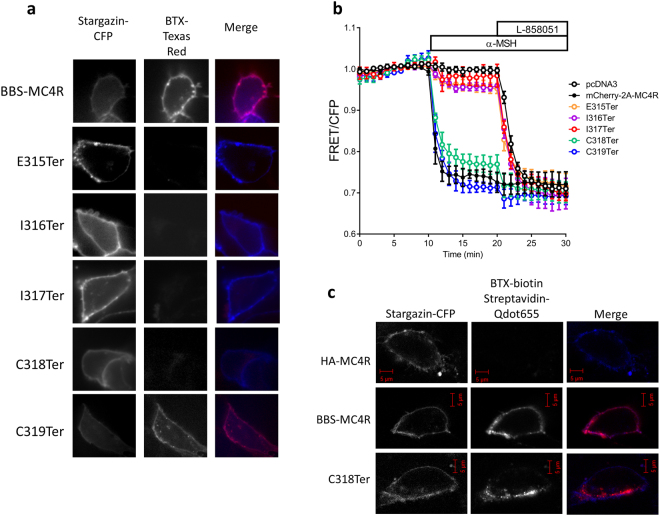Figure 3.
Truncation mutations in the 315EIICC319 region affect cell surface expression and signaling. (a) Cell surface localization, indicated by overlap with Stargazin-CFP which is a marker for the membrane, of bungarotoxin binding sequence (BBS)-tagged wild-type and truncated MC4R was observed using Texas Red conjugated bungarotoxin. WT and several truncation mutants are observed robustly on the cell surface, while truncations prior to C318 are not. Stargazin-CFP expression is used to label the plasma membrane. (b) cAMP production depicted as reduced FRET in HEK293 cells expressing the EPAC sensor as well as either the wild-type or C-terminal truncation mutants of MC4R. Stimulation with MC4R agonist α-MSH (100 nM) results in robust changes in FRET for the WT and truncations after C318, while mock transfected cells and those expressing truncations before C318 did not respond to α-MSH. The cyclase activator L-858051 (100 µM) was added at the end to activate maximum cAMP response. These data represent the mean ± S.E.M. of three independent replicate experiments where at least 10 cells were imaged per replicate. (c) Cell Surface expression of C318Ter truncation labeled with bungarotoxin-streptavidin and biotin-Qdot655 for brighter signal showing presence of C318Ter on the cell surface that seems to be more transient and therefore more difficult to capture during imaging.

